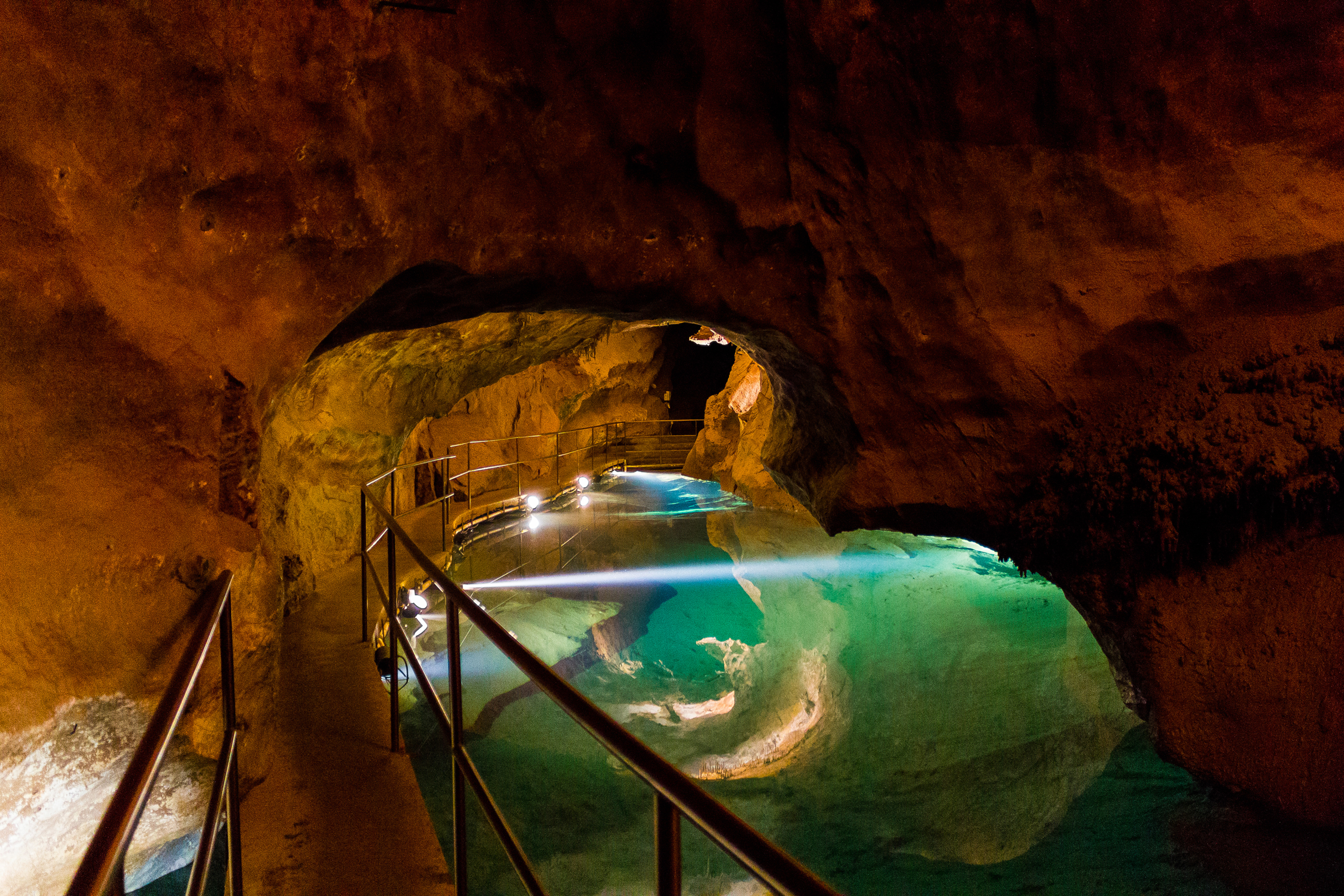Jenolan Caves are a series of caves in Australia. They are famous for their spectacular limestone formations. The caves are located in New South Wales, about 70 miles (113 kilometers) west of Sydney . They lie at the western edge of the Blue Mountains . The name Jenolan (also spelled Genowlan) means high place and comes from the Aboriginal name for a mountain in the area. The main caves in the series include Baal, Chifley, Imperial, Jubilee, Lucas, Orient, River, and Skeleton.

The Jenolan Caves are part of the Jenolan Karst Conservation Reserve, a state government reserve. Karst is a type of landform produced when fresh water trickles through rock, most often limestone, and slowly dissolves parts of the rock beneath the ground. Karst landscapes often include caves, sinkholes, and underground streams. For more on cave formation, see Cave .
Scientists estimate that parts of the Jenolan Caves may have formed more than 340 million years ago, and the process still continues today. In some places, water containing minerals from the soil slowly seeped into the caves. The minerals crystalized and gradually built up to form striking shapes, including pillars called stalagmites and icicle-like stalactites that hang from the cave ceilings.
Aboriginal people of the region originally called the Jenolan Caves Binoomea or Benomera, meaning holes in the hill. No one knows who the first European to see the caves was. According to one story, a bushranger (outlaw) named McKeown (also spelled McEwan) used some of the caves as a hideout, so he may have been the first. However, some people believe James Whalan, who was searching for McKeown in the area in 1838, was the first European to see them.
The Jenolan Caves were opened to the public in the 1860’s. Government efforts to protect them also began in the 1800’s. In 1997, the Jenolan Karst Conservation Reserve was established. In 2000, the United Nations Educational, Scientific and Cultural Organization (UNESCO) added the Jenolan Caves to its World Heritage List as part of the Greater Blue Mountains World Heritage Area. The World Heritage List recognizes places of unique cultural and natural importance.
See also New South Wales .
